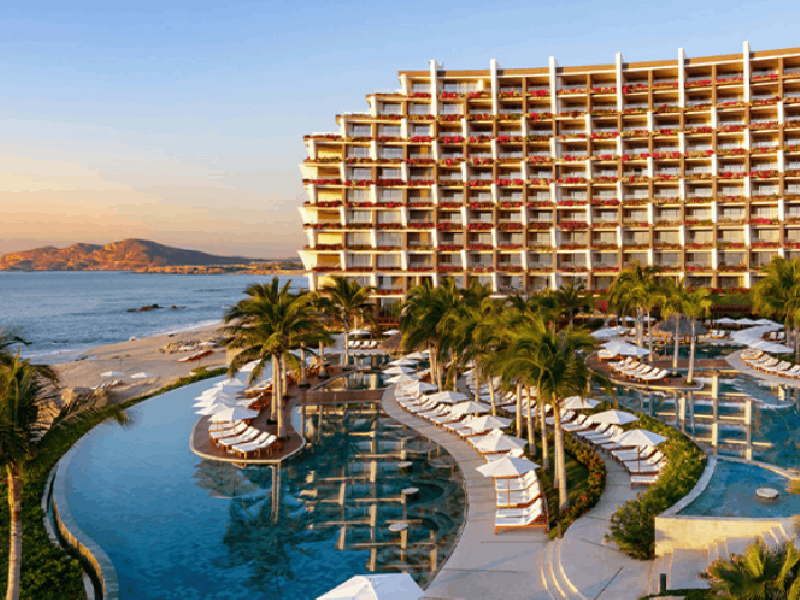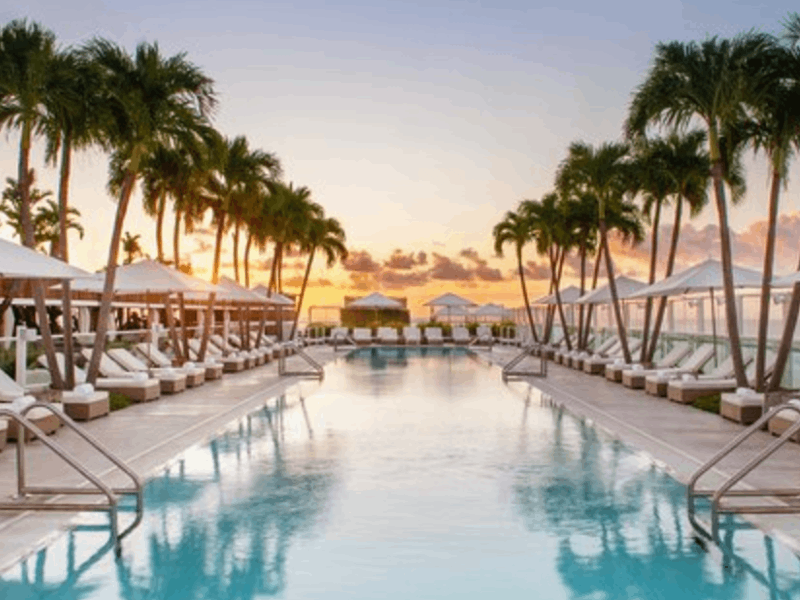
Canadian demand for U.S. luxury getaways has softened markedly this year, as a mix of politics, policy and border-crossing friction reshapes where affluent travellers spend. The shift shows up in official traffic counts, airline bookings and consumer sentiment surveys—and U.S. hoteliers in high-end destinations from Florida to California are feeling it.
Statistics Canada reports that Canadian residents made 2.6 million trips to the United States in July 2025, a 32.4% year-over-year drop, following a 28.7% decline in June. For the first quarter of 2025, Canadian visits to the U.S. totaled 6.1 million, down 10.8%, with spending falling 7.9% to $5.7 billion. (Statistics Canada)
Air carriers are seeing the same pattern. Air Canada says U.S.-bound bookings fell in the “low-teens” percent range over the next six months, attributing the drop to trade tensions, political rhetoric and a weaker Canadian dollar while noting stronger demand to Mexico and the Caribbean. (Reuters)
Sentiment data points in the same direction. A national Leger study found 57% of Canadians are less open to travelling to the U.S. in the next six months, with nearly half saying they are much less open. Separate research indicates that among Canadians wary of U.S. policy and politics, 42% substitute trips within Canada, while 30% switch to other international destinations—especially Europe, Mexico and the Caribbean. (Travel Market Report)

Why the luxury segment is peeling away
Interviews with travel advisors and hoteliers point to three reinforcing drivers behind the luxury pullback.
Border experience anxiety. Many Canadians conflate the roles of U.S. immigration agencies, but the frontline experience at airports and land crossings is shaped by U.S. Customs and Border Protection (CBP), not Immigration and Customs Enforcement (ICE). CBP officers—not ICE—make admissibility decisions at ports of entry. That distinction hasn’t prevented anxiety from mounting as travelers share stories of longer secondary inspections and device checks. CBP emphasizes that device searches remain rare, but its own data show the practice is rising: 47,047 electronic device searches in FY2024 (about 0.3% of international arrivals), and a record 14,899 searches in the April–June 2025 quarter. (U.S. Customs and Border Protection)
Concerns about inconsistent application of rules have also been fueled by official advisories. Ottawa recently warned Canadians with an “X” gender marker on their passports that they may face complications entering the U.S., even as U.S. agencies say gender identity does not determine admissibility. While Canadian officials said earlier this summer there had been no confirmed denials solely on the basis of the “X” marker, the advisory itself has spooked some would-be visitors. (Reuters)
For luxury travellers—often carrying sensitive business data and expecting a frictionless arrival—these headlines create a perception risk that competes with the promise of five-star service after customs.
Politics and tone. Industry campaigns to lure Canadians back to U.S. resorts are running headlong into a broader reputational headwind. Surveys and industry briefings cite “political rhetoric” and immigration enforcement optics as real factors in trip substitution. California’s tourism authorities and destination marketers elsewhere report weaker Canadian traffic this year, part of a wider decline in international visitors to the U.S. amid concerns about welcome and safety. (The Guardian)
Economics. The CAD-USD exchange rate and tariff headlines compound the problem at the top end of the market. When a luxury room priced in U.S. dollars is paired with premium dining, spa and shopping—often also dollar-denominated—the total bill has climbed faster than comparable experiences in Europe or at Caribbean all-inclusive properties. Air Canada’s booking commentary echoed that substitution, and several state tourism offices have acknowledged double-digit declines in Canadian arrivals this year. (Reuters)

Where the money is going instead
Luxury agencies and networks say the spend hasn’t vanished—it’s moving. Virtuoso, a global consortium focused on upscale travel, reported double-digit year-over-year growth in luxury sales through mid-2025, with strong bookings to Mediterranean Europe and high-end Mexico/Caribbean stays. Airbnb’s seasonal snapshot similarly showed Canadians dispersing to Greek islands and other long-haul leisure destinations. (Travel Market Report)
That shift is mirrored in border numbers: despite July’s U.S. decline, overseas travel has held up far better than cross-border trips, and U.S. arrivals to Canada are also slipping—suggesting a two-way cooling in the transborder leisure market. (Statistics Canada)

Pressure points at the border
Luxury travellers describe the uncertainty of inspection as the most corrosive element. CBP stresses that primary inspection is brief for most visitors and that searches and secondary inspections are lawful under the long-standing “border search” doctrine. Courts have carved out limits—one 2024 ruling required a warrant for certain device searches at JFK—but the broad authority remains, and the trendline on device checks is upward. (Wikipedia)
Travel advisors say the practical fallout includes clients traveling with “clean” devices, avoiding work laptops, or choosing destinations that do not require U.S. transit. That behavioural change is hard to quantify but easy to market against: European hotels and Caribbean luxury brands are highlighting “seamless arrival” as a competitive edge.
Impact on U.S. luxury hospitality
From Palm Beach to Beverly Hills, U.S. resorts that once counted on Canada as a reliable shoulder-season market report softer premium room demand and are leaning on promotions to backfill. Several states have launched discounts and targeted campaigns aimed at Canadians, while destination marketers in California and the Northeast acknowledge a meaningful gap to 2024. National and state visitor agencies also report broader international visitation declines this year, suggesting the Canadian pullback is part of a larger picture. (Asian Hospitality)
What could change the trend
Travel executives point to three levers that could reverse course for Canadian luxury travellers:
- Clarity and predictability at the border. CBP is publishing more granular statistics on device searches and explains that such checks reach a tiny fraction of travellers. If that message lands—and wait times improve—it could rebuild confidence among high-spend visitors who value a predictable arrival above all else. (U.S. Customs and Border Protection)
- Tone at the top. Airlines and destination marketers say rhetoric matters. Air Canada explicitly tied part of its booking softness to political messaging alongside economics, a signal that de-escalation may pay immediate dividends for demand. (Reuters)
- Price signals. A stronger Canadian dollar—or aggressive, value-rich offers from luxury U.S. properties—could narrow the gap with competing destinations. In the meantime, the smart money in Canada’s luxury travel market is chasing European and sun-belt alternatives.
The bottom line
This is not a boycott so much as a recalibration. The data show a sharp, sustained fall in Canadian trips to the United States, a shift confirmed by airline bookings and consumer surveys. Border-crossing concerns—rightly or wrongly assigned to ICE rather than CBP—combine with politics and price to push Canada’s luxury travellers toward Europe, Mexico and the Caribbean. For U.S. luxury resorts used to counting Canadian dollars among their most reliable revenue streams, the message is simple: make arrival easy, mind the tone, and sharpen the value proposition—or watch high-spend guests go elsewhere. (Statistics Canada)
Note: CBP, not ICE, conducts primary inspections and admissibility decisions at U.S. ports of entry, a distinction that matters for travellers’ expectations at the border. (U.S. Customs and Border Protection)
